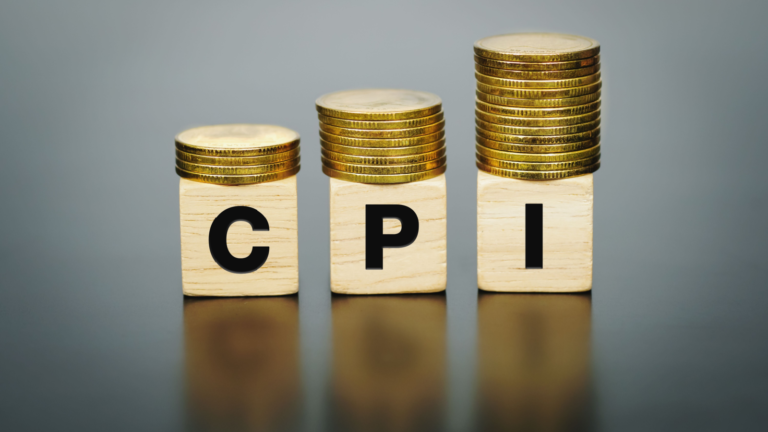January’s Consumer Price Index (CPI) may well be the latest and greatest macro signal that the Federal Reserve’s hawkish streak is far from over. Wall Street is abuzz with rumors that with jobs, consumer spending and, of course, inflation all managing to defy projections, the Federal Reserve may be on a collision course for more rate hikes. What should you expect from the Fed this year?
For the better part of the past year and a half, CPI reports have been something akin to economists’ football Sundays. Indeed, as the Fed embarked on its tightening campaign, the CPI has been perhaps the most watched inflation gauge, even despite the Fed’s stated preference for the Personal Consumption Expenditure (PCE) inflation index.
The stakes have always been the same: when prices are stubbornly elevated, the case for further rate hikes strengthens. Should it seem prices are coming down, analysts immediately begin daydreaming of a dovish pivot. In that regard, this time around was little different.
Consumer prices increased 0.5% month over month in January, reflecting annual inflation of 6.4%. The elevated prices were fueled by categories like food prices, which were up 10.1% from last January, as well as shelter costs, which increased nearly 8% on an annual basis. That’s the fastest rate since 1982.
Prices were a bit higher than expected, though still notably better than the 9% annual inflation recorded last summer. Yet, with the Fed’s stated 2% goal still on the mind of most economists, January’s report may be the final straw for the central bank.
Indeed, with a slew of other economic data showing the U.S. is in a mixed economic state, the CPI may be the final clue confirming the Fed’s hawkish path forward.
January CPI, Jobs Report Point to Further Rate Hikes
Fed Chair Jerome Powell has repeatedly warned of the necessary rate hikes to come. Indeed, just last week, Powell commented on the country’s “base case” as it pertains to rate hikes.
“There’s been an expectation that it [inflation] will go away quickly and painlessly — and I don’t think that’s at all guaranteed … The base case for me is that it will take some time, and we’ll have to do more rate increases and then have to look around and see if we’ve done enough.”
Alongside the CPI’s underwhelming inflation update, there have been other indicators that the country likely requires some additional tightening to achieve the inflation level the central bank desires, namely, the January jobs report.
The U.S. economy added a staggering 516,000 nonfarm payrolls in January, nearly triple the market estimate of 187,000. Now, inflation and unemployment have long maintained a push-and-pull relationship. Generally, inflation rises as unemployment falls and vice versa. When more consumers are earning healthy wages, they will naturally, well, buy things. This pushes the aggregate demand of the country up in the process, which naturally results in higher prices.
As such, January’s jobs data was something of a red flag that the country isn’t far enough along in its monetary tightening. Former Treasury Secretary Larry Summers has repeatedly echoed this sentiment. “There’s going to need to be increases in unemployment to contain inflation,” Summers told
Bloomberg in January.
How Many More Rate Hikes Should You Expect This Year?
Going forward, the question is still how much further the central bank needs to go to achieve its 2% inflation goal. Analysts have long speculated the Fed is likely eying a roughly 5% terminal federal funds rate. Unfortunately, recent data has continued to push estimates up. Currently, some economists are tossing around notions the Fed may be looking to raise the benchmark rate as high as 6% before stepping off the gas.
A Fed policy rate of 6% is more than 150 basis points higher than its current 4.5%-4.75%. It would also be the highest level for the benchmark rate since early 2001. Additionally, 6% would undeniably march the country into recession territory.
Now, just because some analysts are pricing in an eternally hawkish Fed doesn’t mean it’s set in stone. In fact, given that the Fed has notably slowed its rate hikes to 25 basis points, you could argue the central bank is prepping for a landing — hard or soft.
According to a recent Bank of America survey of fund managers, most institutional investors believe 5.25% is about the sweet spot for the economy.
Regardless of the terminal rate, Oscar Munoz, U.S. macro strategist at TD Securities, believes the Fed is on track for two more rate hikes before the curtains close on 2022.
“We currently expect two more hikes … But the risk is towards higher rates. The labor market remains strong and it’s going to take a bit more time for it to start showing signs of deterioration … That puts the risk of keeping services inflation and wage growth elevated for quite a bit and that’s going to filter back into inflation. That means the Fed is going to keep the policy rate at high levels for quite a bit longer.”
Is Munoz right? Only time will tell.
On the date of publication, Shrey Dua did not hold (either directly or indirectly) any positions in the securities mentioned in this article. The opinions expressed in this article are those of the writer, subject to the InvestorPlace.com Publishing Guidelines.

